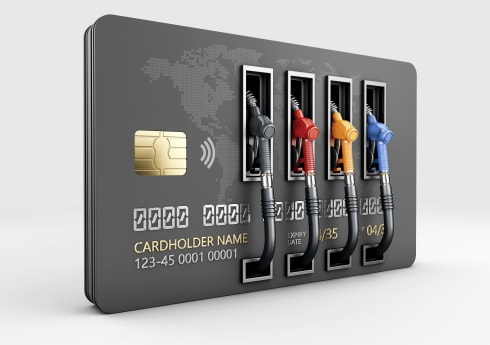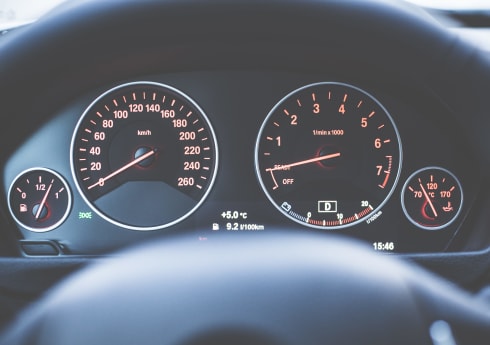10 Quick Steps To Improve Your Fleet Reporting
Fleet reporting is a thankless job! They can be difficult to do, but the business needs those fleet analytics, or you may as well be driving in blind.
Fleet reports let you know how much money you’re spending in all kinds of areas, how much fuel you’re using, and how well your drivers are doing. But how can you make it easier to get that really important information? Here are some easy-to-follow steps to drive up your fleet analytics.
(Updated Mon, 20 May 2024)

1. Use an online fleet management system
The number one way to speed up your reports is to get on the web. These fleet reporting systems have all the graphs your heart could want with the data to back it up. Since it’s online, you can get the data and reports on your phone on the go. Do some last-minute prep before the meeting to get your facts right!
What features they have depends on which system you’re using. The fanciest are best used for large fleets as a fleet vehicle tracking system. Small businesses will be fine with a simpler platform as you don’t need super in-depth fleet analytics.
2. View in-depth driver reports
The best fleet management systems will give you in-depth information on your drivers. You might think you know your drivers, but do you know who breaks harshly? Who spends the least on fuel? Who has never gone past the speed limit in their life? You don’t know for sure!
Many of these automated reports give your drivers a score. They can then see the fleet analytics and know what they can improve.
It makes your fleet reporting easier too: you know exactly who your best performing drivers are right away.
The very best driver reports come from telematics systems. Check out our 5 minute guide to telematics to get the lowdown on everything you need to know.

3. Sign up for fuel cards
Fuel cards are a surprisingly handy tool for every manager to include in your fleet analytics breakdown. Fuel cards have lots of benefits. With these in your driver’s wallet, you know exactly how much fuel they’re pulling.
The best part is that every litre of fuel you buy goes onto one invoice system. No more checking receipts or estimating how much fuel you’re using for VAT reclaims.
Some online fleet management systems can be used with fuel cards. They take in all the fuel info from each card for you to see on an online portal, with all your other management tools in one place.
4. Get EV charge cards for your electric vehicles
According to Shell’s future of fleets report, the industry will be dramatically different by 2040. New vehicles like self-driving cars and electric vans will be all the rage. You might already have hybrid or electric vehicles (EVs) in your fleet already.
But how can you manage these EVs and include them in your fleet reporting? Luckily, even the vehicles of the future recognise the wisdom of the past. You can get a fuel card for your electric vehicles too.
It’s a growing market with just a couple of great options at the moment. But we can help you get the right charge card with all the same benefits as a regular fuel card. Making the switch to green energy doesn’t have to be a hassle!
5. Give your drivers a key fob
What if your drivers swap or share vehicles? It might be quick and easy, but the fleet reports aren’t! Getting driver ID is the best way to avoid a headache from drivers sharing vehicles. The easiest way to get driver ID is to use key fobs.
The key fob is unique to the driver. Even if your driver’s use different vehicles every week, you’ll know who’s who. That makes reporting on driver performance and vehicle use more straightforward.
Key fobs are best used as part of your telematics system. Basically, you’ll use them alongside your vehicle tracking devices for efficient fleet reporting. See who’s driving the vehicle and where the vehicle is all at the same time.
iCompario tip:
As a bonus, only your drivers can use the fobs to get into the vehicles. They improve your security too. If a driver goes in the wrong vehicle or uses it out of work hours, you’ll know about it!

6. Install workplace electric charge points
One of the best parts about electric vehicles is that you can charge them at work and fully track their usage. Company vehicles can even pay lower business rates instead of paying public charges.
These charge points can be connected to your fleet management system. See how often your charge points are being used and who by. This lets you track your costs and usage all in one place. It also saves drivers time by charging up at work instead of trying to find a charge point elsewhere.
7. Get GPS vehicle trackers to see location data
Vehicle trackers are a must-have for every fleet manager. Here’s why. You can see your vehicles on the go and know if they’ve gone to any places they shouldn’t.
How can you improve your time management if you don’t know your accurate arrival times? The right data is like having the right fuel – you need it to keep things running well.
8. See through your driver’s eyes with dash cams
The big benefit of having dash cams is to check driver performance. When you use an online fleet management system, it’ll often tell you some drivers have bad habits like speeding or idling for too long.
Checking on how your driver acts in the vehicle is important to see how these bad habits keep happening. Fleet managers can check if their drivers are eating at the wheel or even using their phones to back up what the driver reports are showing you.
Dash cams are your eyes and ears on the road! Check out our guide to buying dash cams to find out more.
Many telematics systems can be used with dash cams to make your fleet management extra easy. All you have to do is find the right one.

9. Track journey history
Where have your drivers gone in the past month? As part of fleet reporting, you must check for any unauthorised journeys. Seeing the journey history is the easiest way to do this.
This is a feature of fleet management online reporting. Thankfully, it’s all automated! Most systems work by showing you a table or graph of drivers. Click on each one for more details and you’ll see a breakdown of their journeys: where they’ve been, how many trips, milage, and more.
If a driver takes longer than they should or (even worse!) they’re driving the vehicle for personal use, you can easily find out using journey history.
10. Set up customisable alerts
Once you’ve set up your online fleet reports, the next step is to get your notifications in order. Having a great fleet management system doesn’t mean much if you’re not using it effectively.
What do you want to keep an eye on? Set up alerts based on what you want to see. Get alerts when there’s an accident, speeding, and more. We recommend getting a tracking system that can be used on your phone, so fleet owners and managers can get alerts even when you’re not in the office.


